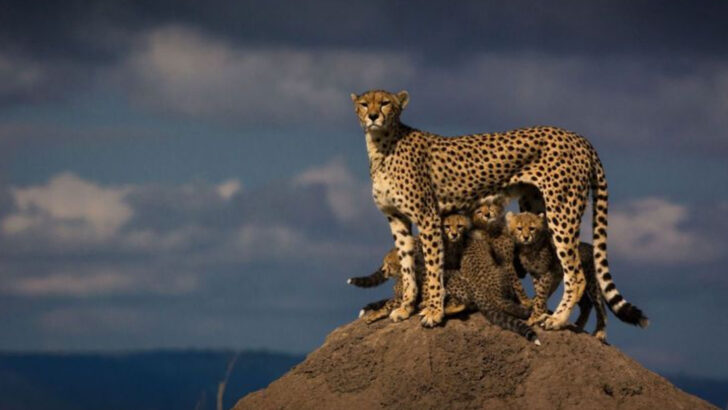Cheetahs don’t just run—they fly.
Not with wings, but with pure muscle, lightning reflexes, and a need for speed that leaves the rest of the big cat world eating dust.
They’re the rebels of the feline family.
Slimmer, faster, and wired differently.
While lions brawl for dominance and leopards slink in the shadows, cheetahs streak across the plains like spotted missiles.
But speed is just the beginning.
Cheetahs are full of surprises—quirky traits, wild behaviors, and biology that breaks the rulebook.
From their chirps to their tear-streaked faces, there’s nothing ordinary about them.
They may be sleek, but they’re not simple.
Get ready to meet the misfits of the big cat kingdom.
Here are 14 fascinating facts that prove cheetahs are in a league of their own.
Record-Breaking Speed
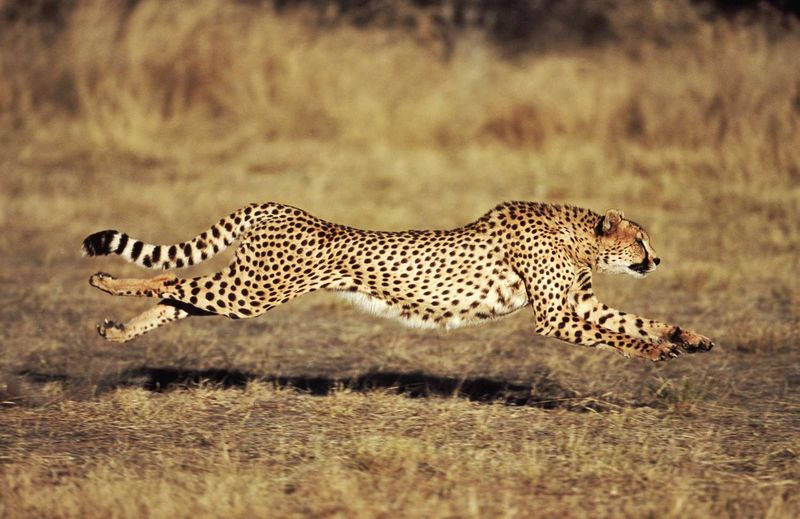
Imagine a lightning bolt streaking across the savannah. That’s the cheetah, the fastest land animal on Earth. Reaching speeds up to 70 mph, this feline marvel can accelerate from 0 to 60 in just a few seconds. Unlike other big cats that rely on stealth and power, cheetahs depend on their unparalleled speed to catch prey.
Their lightweight frame and long legs are tailor-made for sprinting, allowing them to cover ground in the blink of an eye. However, this incredible speed comes at a cost, limiting their ability to engage in prolonged chases.
Non-Retractable Claws
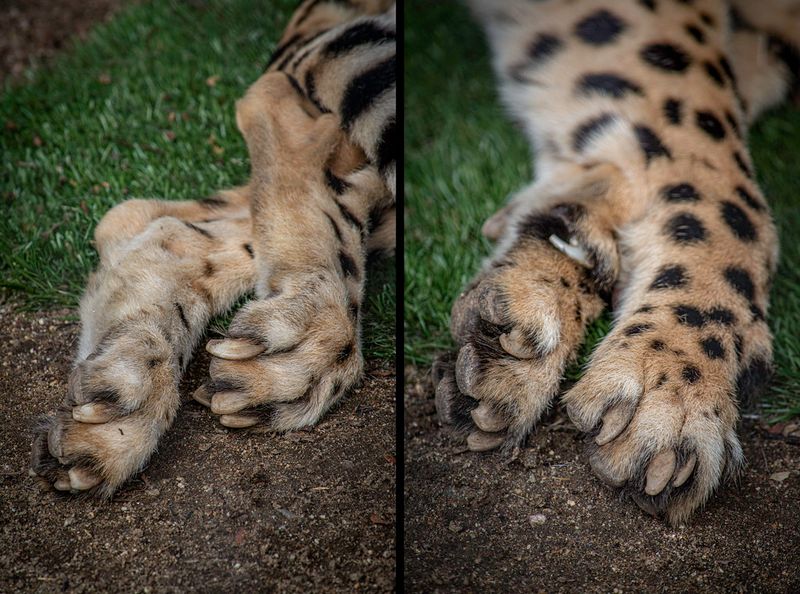
Cheetahs have a unique advantage among big cats: their claws. Unlike their feline cousins, cheetahs’ claws are non-retractable. This feature, akin to running spikes, provides extra grip during high-speed chases.
It’s an adaptation that enhances their incredible sprinting ability, offering traction that no other big cat possesses. This evolutionary trait demonstrates nature’s ingenuity in crafting specialized hunters.
While this aids in speed, it also means cheetahs are less equipped for climbing trees, making them more vulnerable to other predators when they aren’t on the hunt.
Distinctive Tear Marks
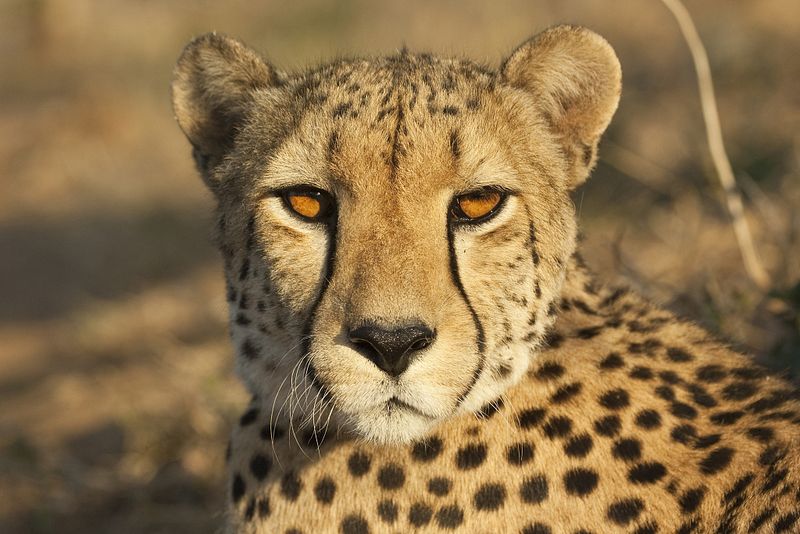
The cheetah’s tear marks are more than just a striking facial feature. These dark lines, stretching from the inner corners of their eyes down to the sides of their mouths, serve a practical purpose. By reducing glare from the sun, they help cheetahs see over long distances during daylight hunts.
This adaptation is like a pair of built-in sunglasses, aiding them in spotting prey. These distinctive markings also help in communication and expressing mood among cheetahs, a visual language as unique as their spots.
Exceptional Eyesight

Cheetahs possess extraordinary eyesight, a crucial tool for their hunting prowess. Their vision is adapted for spotting prey from afar, detecting movement at great distances on the open plains.
A cheetah’s eyes are set distinctly to allow for a wide field of view, essential in the vast savannah. This keen sight ensures that they track their prey with precision, capitalizing on speed and timing to secure a meal.
With eyesight akin to binoculars, cheetahs can see clearly up to 5 kilometers away, making them masters of the open field.
Solitary Nature
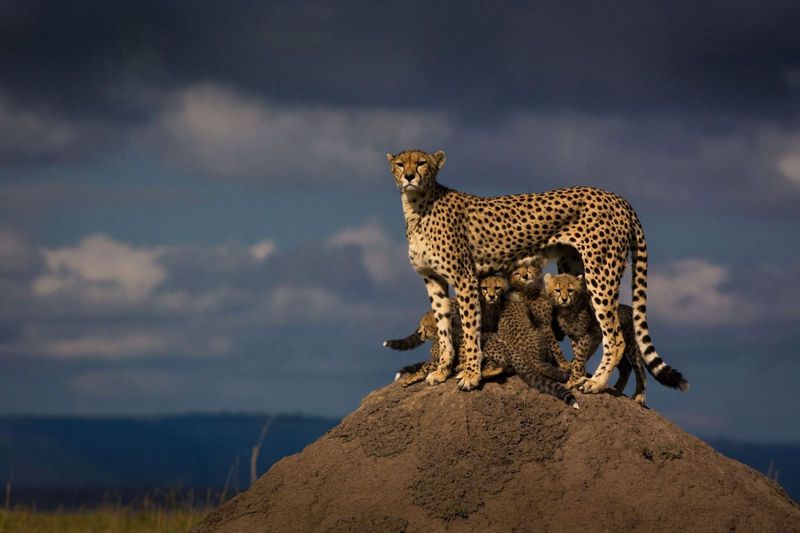
Unlike lions, who thrive in prides, cheetahs are primarily solitary creatures. Adult females live independently, except when raising cubs. This solitary lifestyle is suited to their hunting strategy, allowing them to move stealthily through the grasslands without attracting attention.
Male cheetahs, on the other hand, may form small groups known as coalitions, usually with brothers from the same litter. This formation enhances their hunting success and territory defense. The cheetah’s preference for solitude and occasional brotherly bonds paints an intriguing picture of their social dynamics.
Unique Vocalizations
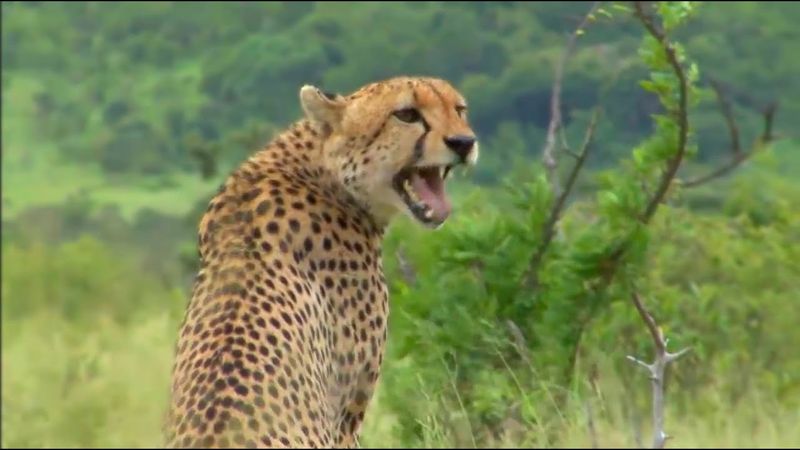
Cheetahs communicate in a way that’s as unique as their speed. Unlike the roars of lions or the growls of tigers, cheetahs purr and chirp, producing a variety of vocalizations to express themselves.
These sounds include chirping, which resembles a bird’s call, and growling during tense interactions. Mothers use these vocal signals to call for their cubs or warn them of danger. This distinct communication method gives a voice to their silent pursuit across the plains, a gentle symphony of sounds unique to their kind.
Flexible Spine
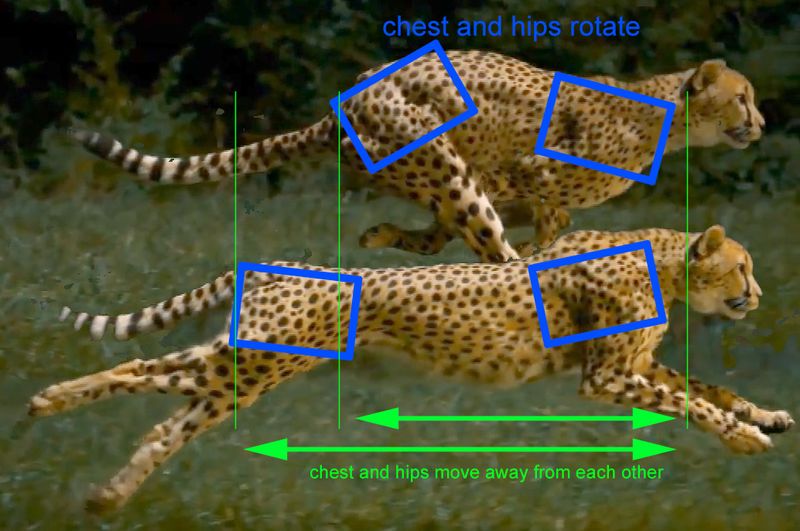
At the heart of the cheetah’s speed lies its flexible spine. This incredible adaptation acts like a spring, allowing the cheetah to stretch its body to cover maximum distance with each stride.
During a chase, a cheetah’s spine bends and flexes, propelling it forward with breathtaking efficiency. This flexibility not only aids in speed but also provides agility, enabling quick turns during high-speed pursuits. It’s a remarkable feature that underscores the cheetah’s specialization as a sprinter, perfectly attuned to its environment and lifestyle.
Remarkable Breathing
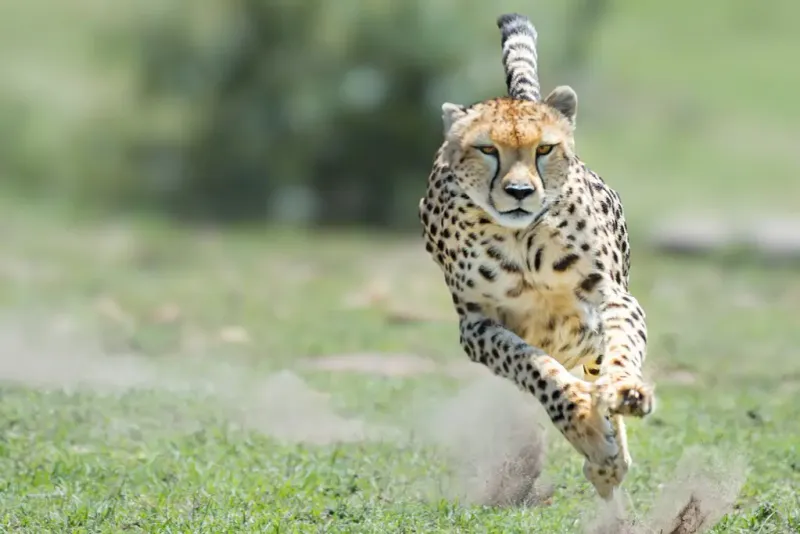
A cheetah’s respiratory system is a marvel of nature, designed to support its high-speed chases. During a sprint, a cheetah can take up to 150 breaths per minute, ensuring that its muscles receive a constant supply of oxygen.
This rapid breathing is synchronized with its stride, allowing maximum efficiency during those critical hunting moments. However, this intense exertion also limits their chases to short bursts, as overheating becomes a risk. This fine-tuned breathing system highlights the delicate balance of power and endurance that defines the cheetah’s prowess.
Distinctive Coat Pattern
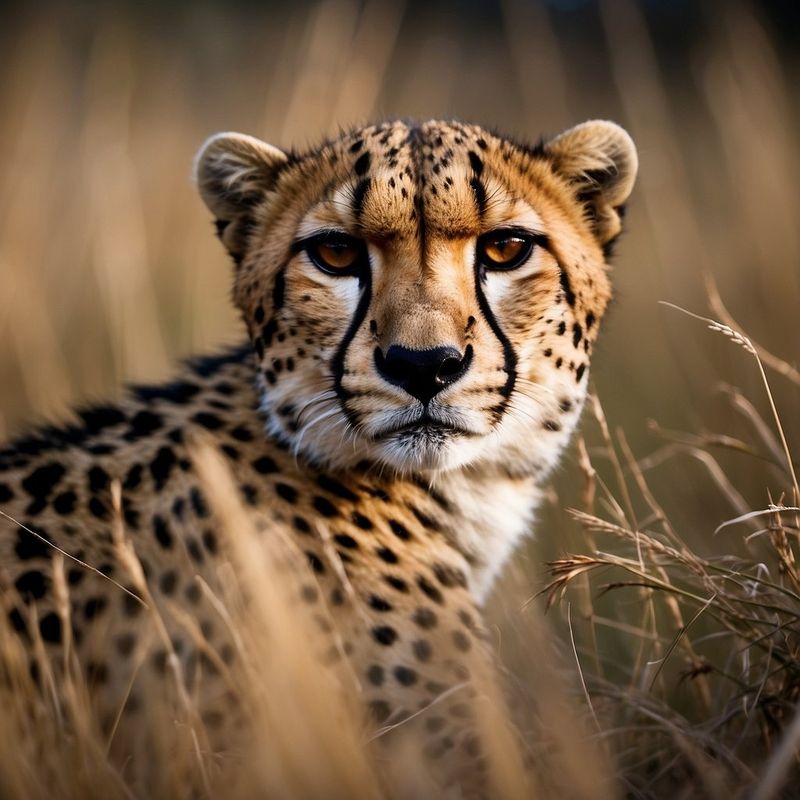
Every cheetah boasts a unique coat, with a pattern of spots that sets it apart from others. These black spots on a golden background provide perfect camouflage in the dappled light of their grassland habitat. No two cheetahs have the same pattern, making each one an individual masterpiece.
This camouflage is vital for stalking prey without detection. The spots blend seamlessly with the landscape, allowing the cheetah to approach its target unobserved. This intricate design showcases the artistry of nature, tailored for survival in the wild.
Hunting Techniques

Cheetahs are master hunters, with strategies that capitalize on their speed and agility. Unlike other big cats that rely on ambush tactics, cheetahs stalk their prey before a breathtaking chase.
Once close enough, they burst into a high-speed pursuit, using explosive energy to close the gap. A cheetah’s hunt is a combination of precision and timing, targeting smaller and faster animals. This method ensures efficiency and success, securing their position as one of nature’s most adept predators. Their ability to hunt in the heat of day sets them apart from their nocturnal cousins.
Lightweight Build
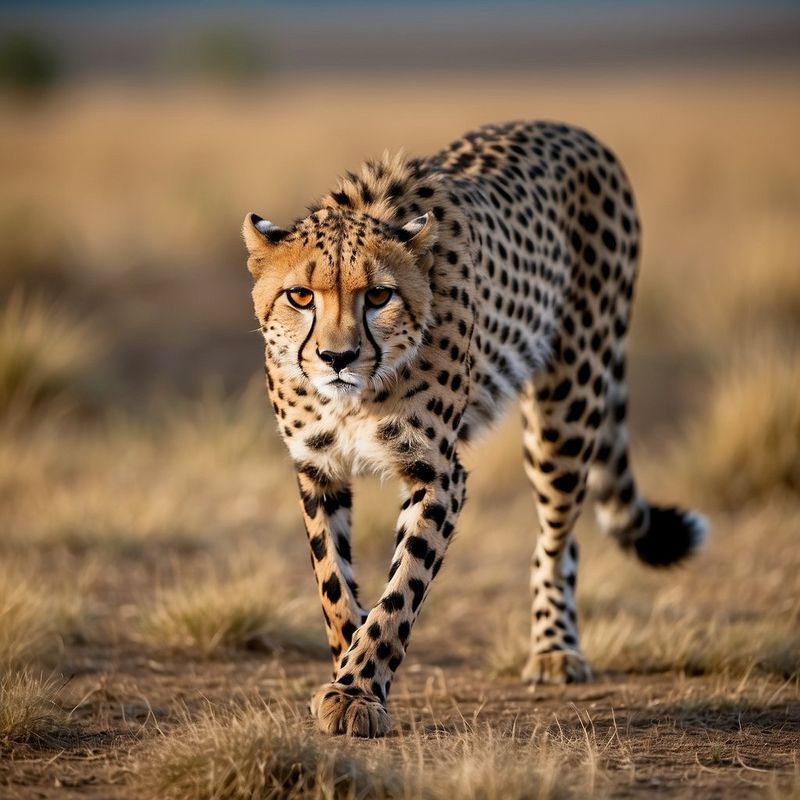
Cheetahs are built for speed, with a lean and lightweight frame that emphasizes agility. Weighing between 70-90 pounds, they are aerodynamic masterpieces, designed to cut through the air with ease.
This slim build reduces drag and supports rapid acceleration, allowing for swift maneuvers during a chase. The cheetah’s physique is a testament to evolutionary perfection, where every feature is honed for one singular purpose: speed.
Their lithe structure is both a strength and vulnerability, emphasizing the cheetah’s unique niche among the big cats.
Short Lifespan
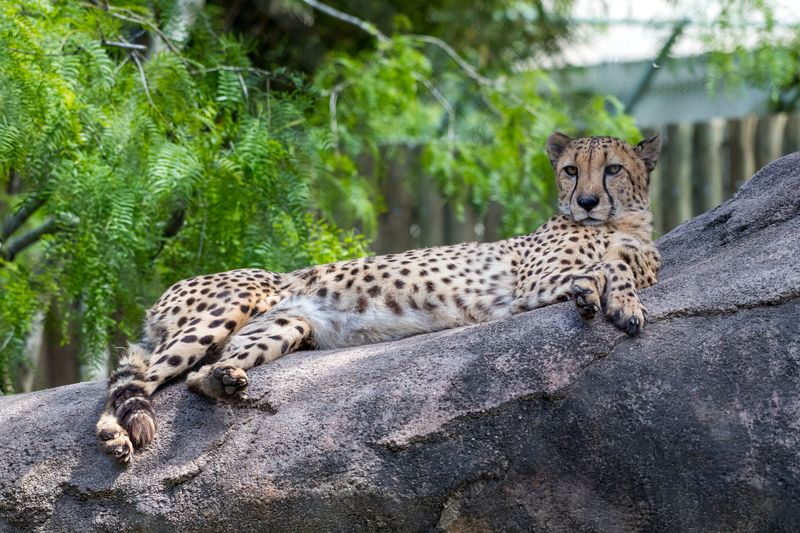
Life is fleeting for the cheetah, with an average lifespan of 10-12 years in the wild. Their existence is a race against time, marked by the challenges of survival in a dynamic ecosystem.
Cheetah cubs face high mortality rates, and adult cheetahs contend with threats from larger predators and habitat loss. This brief lifespan reflects the harsh realities of life in the wild, where every day is a testament to their resilience.
Despite these challenges, the cheetah remains a symbol of grace and tenacity, an enduring icon in the animal kingdom.
Challenge of Conservation
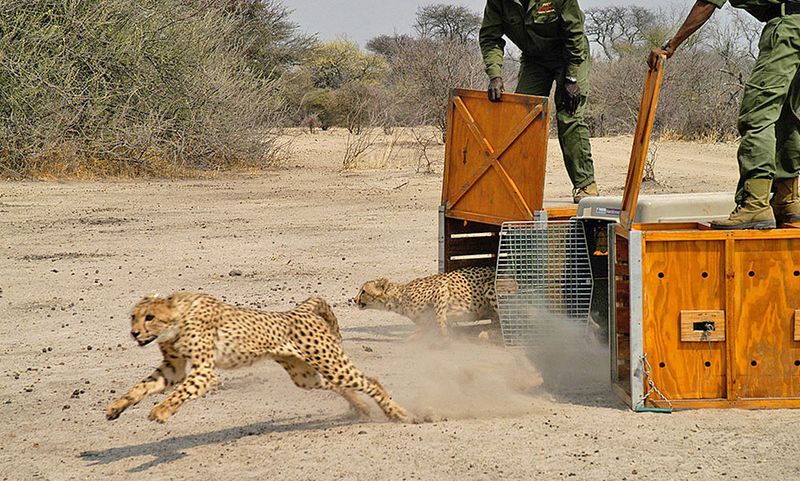
Cheetahs are racing against extinction, with their populations declining due to habitat loss and poaching. Conservation efforts are critical to ensuring their survival, with organizations working tirelessly to protect these magnificent creatures.
The challenge lies in balancing human development with wildlife conservation, a complex issue requiring global cooperation. Programs focusing on habitat restoration and anti-poaching measures offer hope for the future.
Educating communities about the importance of cheetahs is vital for fostering coexistence. Protecting the cheetah’s future is not just about saving a species but preserving a piece of our natural heritage.
Historical Significance
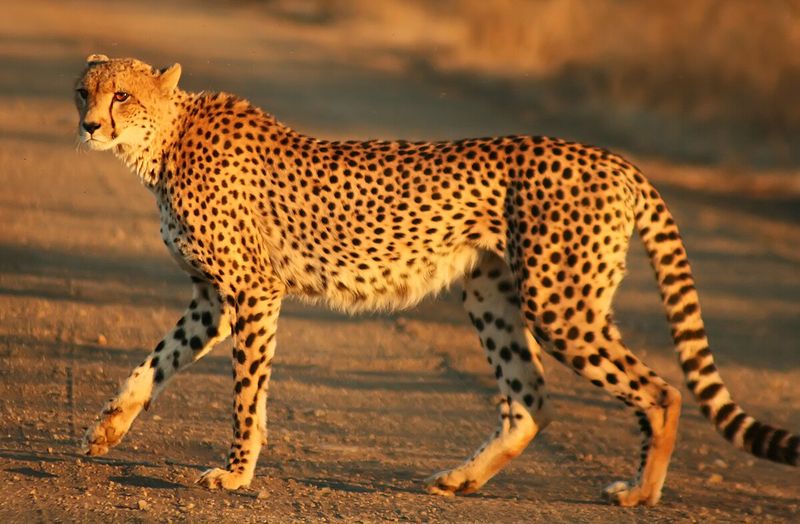
The cheetah has been revered throughout history, from ancient Egypt to modern times. Pharaohs kept cheetahs as symbols of royalty and hunting prowess, showcasing their speed as a tribute to the gods.
In ancient art and mythology, cheetahs were depicted alongside kings and deities, embodying grace and power. This historical significance adds a rich cultural dimension to their story, linking them to human history in profound ways.
Today, the cheetah continues to inspire awe, bridging the past with the present as a timeless emblem of elegance and speed.

